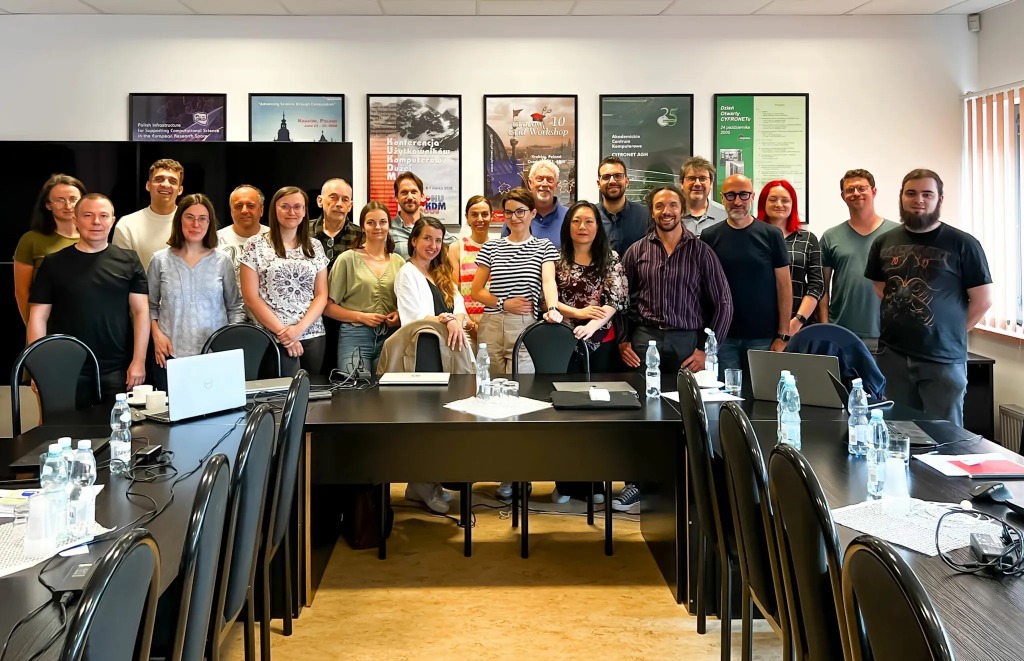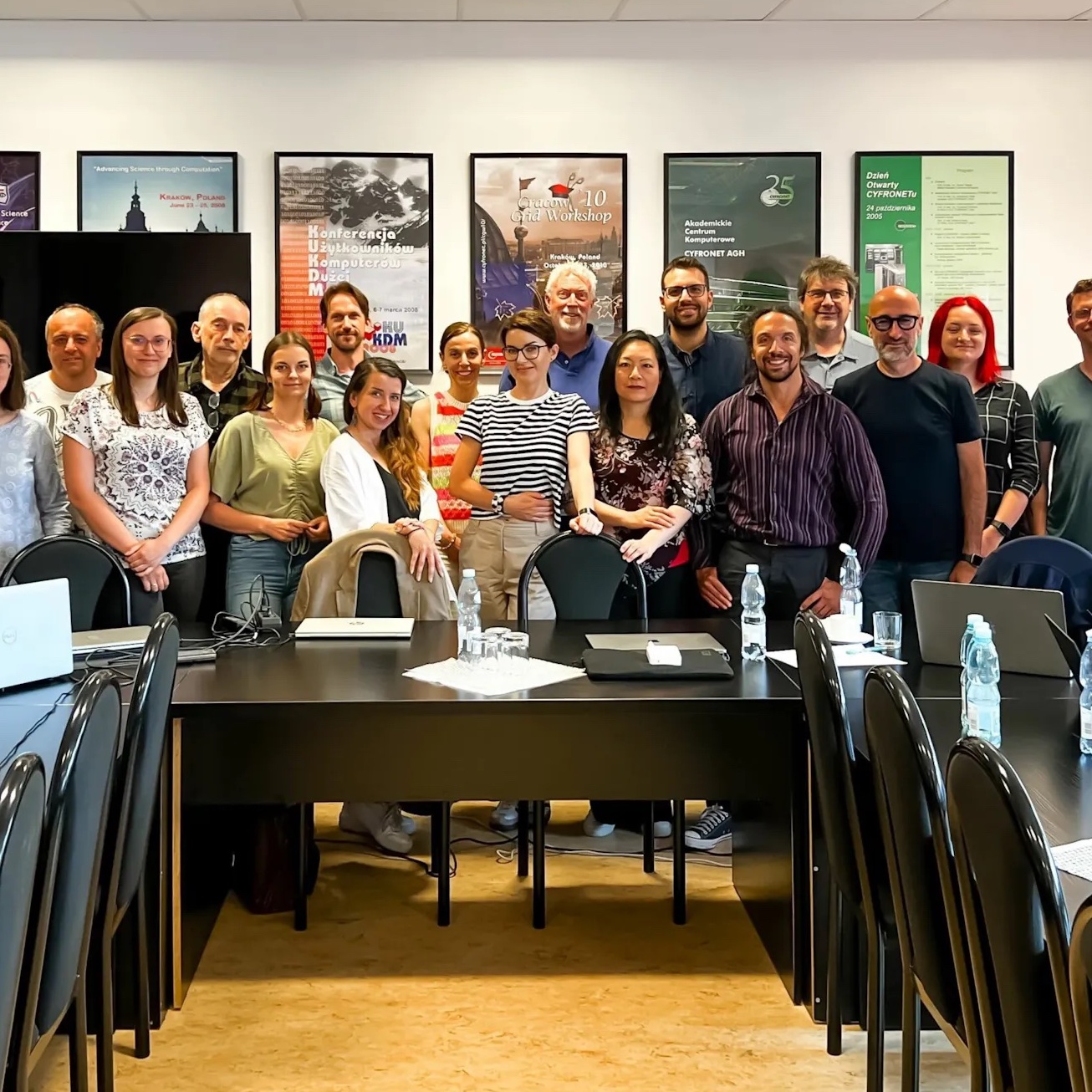27-Jun-2024
In June, Krakow hosted a three-day workshop to advance the European Open Science Cloud (EOSC). From the 10th to the 12th, invited stakeholders from across Europe gathered under the auspices of Work Package 15 (WP15), led by ACC Cyfronet AGH with support from the EGI Foundation as project coordinator.
Workshop Focus and Goals
EOSC Beyond WP15 collates requirements from pilot EOSC Nodes, devising service integration plans and facilitating co-design activities. Technical experts shape frameworks to adopt advanced capabilities within EOSC. The workshop fostered unity among stakeholders, partners, and Open Science contributors.
The Instruct ARIA team took part in the EOSC Beyond workshop working to define EOSC Nodes. Instruct-ERIC is putting together the pilot Thematic node for the Structural Biology community

Background and Preliminary Work
This workshop followed preparatory meetings in May by the Cyfronet team and EGI partners. These meetings included discussions with representatives from organisations such as CESSDA, LifeWatch, NFDI, ENES, NI4OS, Instruct-ERIC, E-INFRA CZ, CNB-CSIC, and MetroFood-RI. Insights from these discussions set the stage for the deep-dive exploration during the event.
Workshop Highlights
Day 1: Defining and Understanding EOSC Nodes On the first day the focus was on understanding EOSC Pilot Nodes, covering technical aspects, node typology, key stakeholders, and potential services. Participants collaboratively developed a universal technical template that detailed the Minimum Viable Node - a description and parameters of a Pilot Node. Subsequently, each use case created its own description based on this document.
Day 2: Node Specification and Integration Roadmap The second day focused on classifying and specifying pilot nodes and data spaces, integrating them with Core and Horizontal services of the EU Node, and examining potential scaling scenarios with e-Infrastructure nodes such as EGI. Outputs included well-defined use cases, an integration matrix, and a preliminary integration roadmap for future EOSC developments.
Day 3: Understanding Connections and Defining Requirements The final day detailed use cases and implementation plans, focusing on integrations and dependencies between EOSC Pilot Nodes. The goal was to sketch out a federation network for EOSC Beyond pilots and identify specific requirements for EOSC Core services like AAI, PID Service, Resource Catalogue, Marketplace, Order Management, Monitoring, Accounting, Helpdesk, Integration Suite, and Execution Framework.
Going forward
The workshop was more than a series of meetings; it was a convergence of ideas, expertise, and visions for the future of EOSC. It brought together stakeholders, each contributing unique perspectives and years of experience. Attendees not only helped develop a new technical concept for the Federation of EOSC Nodes but also set the foundation for the next stages of EOSC that the EOSC Beyond project will help implement. A representation of the pilot nodes is expected to present progress on their use cases at the upcoming EGI2024, taking place this autumn in Lecce, Italy.
